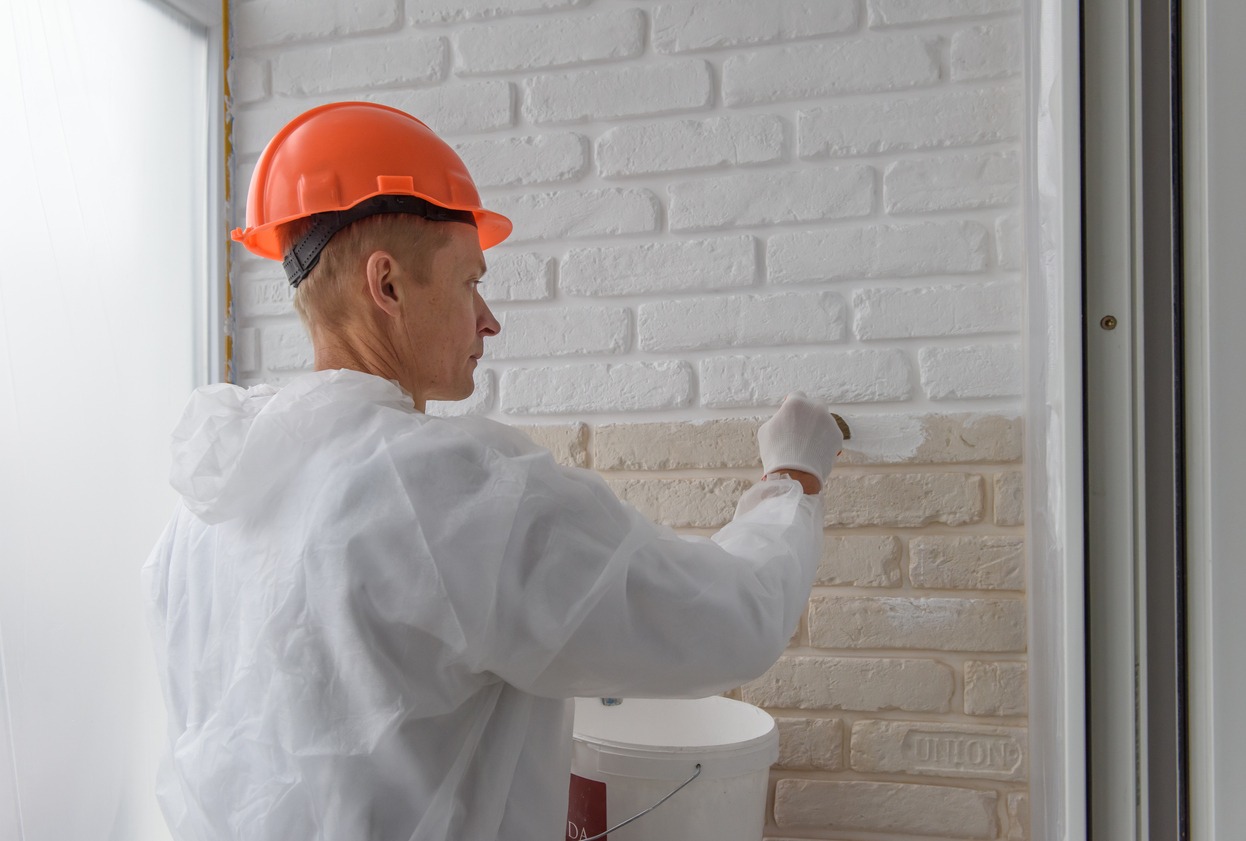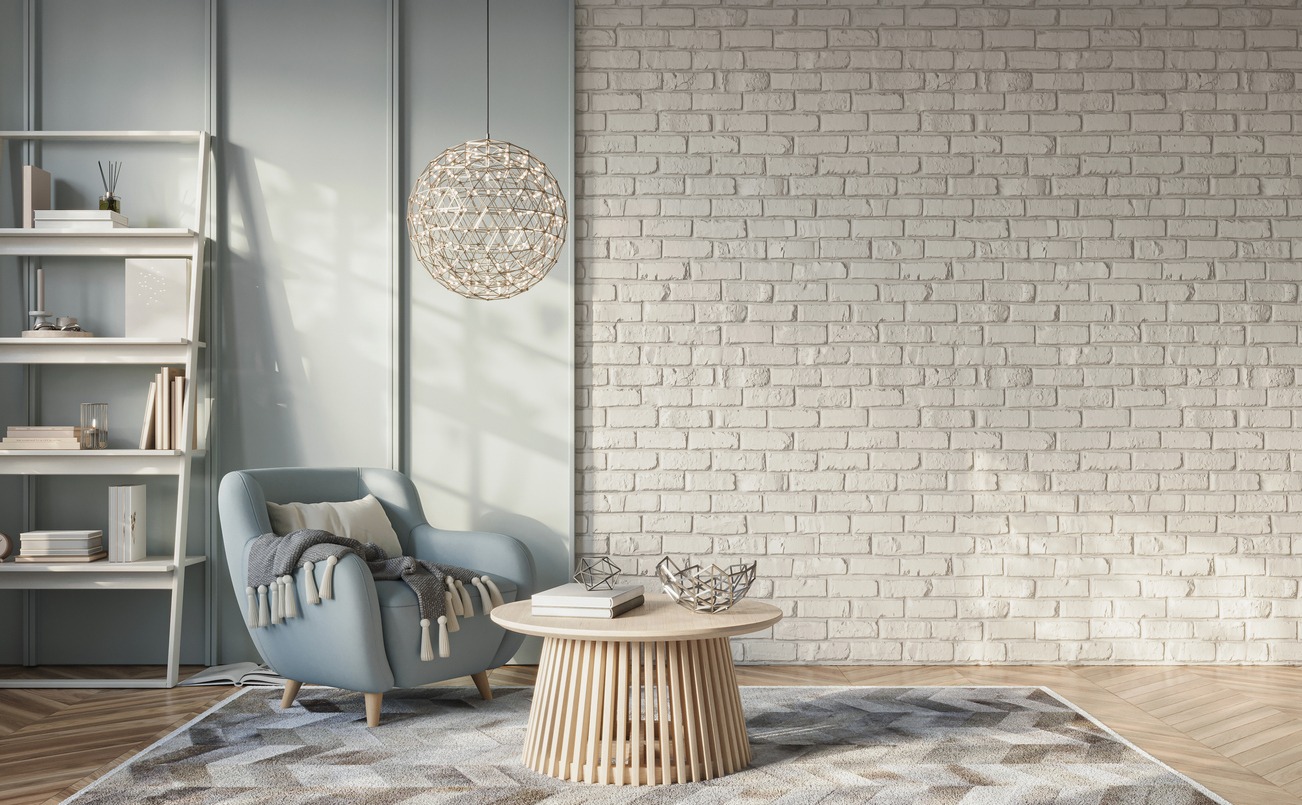Painting brick walls is a choice many homeowners face. It can transform a space, making it look modern and fresh. Yet, the natural look of brick also holds a timeless charm. In this article, we’ll explore whether it’s better to paint brick walls or leave them as they are. We’ll weigh the pros and cons, consider maintenance, and help you decide what’s best for your home. Whether you’re aiming for a new look or preserving classic beauty, understanding both options will guide you in making the right decision.
Historical and Architectural Context
Understanding the use and treatment of brick in construction requires a look back at its history and evolution. From ancient civilizations to modern homes, brick has played a significant role in architecture.
Brief History of Brick Use in Construction
Brick is one of the oldest known building materials, dating back to 7000 BC in the Middle East. Early bricks were made of mud and dried in the sun. The Romans advanced brickmaking by firing clay bricks in kilns, making them more durable and consistent. This innovation spread throughout Europe, leading to the construction of iconic structures such as the Roman aqueducts and medieval castles. In the 18th and 19th centuries, the Industrial Revolution brought mass production of bricks, making them a staple in urban architecture.
Common Architectural Styles that Feature Brick Walls
Brick walls are prominent in various architectural styles:
- Georgian and Federal: Characterized by symmetry and classic proportions, these styles often feature red brick facades with white trim.
- Victorian: Known for intricate designs and patterns, Victorian architecture uses brick for both structure and decoration, with ornate brickwork being a key feature.
- Colonial Revival: This style emphasizes traditional colonial elements, often including brick walls that evoke the solidity and craftsmanship of early American homes.
- Mid-Century Modern: This style incorporates brick as a sleek and unadorned material, blending natural elements with modern design principles.
Evolution of Trends in Brick Wall Finishes
The treatment of brick walls has evolved over centuries, influenced by both practical needs and aesthetic trends:
- Natural and Unfinished: Historically, brick walls were left unfinished to showcase the natural beauty and texture of the material.
- Painted Brick: In the early 20th century, painting brick became popular for adding color and protection against weathering. White and pastel colors were common in residential architecture.
- Exposed Brick: By the mid-20th century, a trend emerged to expose brick in interior spaces, particularly in urban lofts and converted industrial buildings, celebrating the raw, rustic appeal of the material.
- Modern Finishes: Today, trends include a mix of natural and treated brick finishes, from sleek, polished surfaces to distressed, aged looks that add character and warmth.
Advantages of Painting Brick Walls
Painting brick walls can significantly alter the look and feel of a space, offering both aesthetic and practical benefits. Whether you’re considering this change for an interior or exterior wall, understanding the advantages can help you make an informed decision.
Aesthetic Enhancement
- Modern Appeal: Painting brick walls can give your home a sleek, contemporary look. White, gray, and other neutral tones can make a space feel more modern and fresh.
- Color Variety: Paint offers an endless array of color choices, allowing you to match your walls to your decor and personal style.
- Uniform Appearance: Painting can provide a clean, uniform appearance, especially if the brickwork is discolored or has variations that detract from its look.
Increased Protection
- Weather Resistance: Exterior brick walls can benefit from a layer of paint that protects against the elements. This can help prevent moisture from seeping into the bricks and causing damage over time.
- Preventing Mold and Mildew: Good quality paint can create a barrier against mold and mildew, particularly in humid climates or areas prone to dampness.
Ease of Maintenance
- Cleaning: Painted brick walls are easier to clean than natural brick. Dirt and grime can be easily wiped away from a painted surface, while unpainted brick is more porous and harder to maintain.
- Pest Deterrence: A sealed, painted surface can deter insects and pests that might otherwise find their way into the porous material of untreated brick.
Cost-Effective Renovation
- Affordable Update: Painting is a cost-effective way to update the look of your home without the expense of extensive renovations.
- Concealing Imperfections: Paint can cover imperfections in the brickwork, such as stains, discoloration, or small cracks, giving the wall a new lease on life.
Increased Property Value
- Curb Appeal: A freshly painted exterior brick wall can boost the curb appeal of your home, potentially increasing its market value. This can be particularly appealing to potential buyers who appreciate a modern, well-maintained appearance.
Personalization
- Customization: Painting allows you to personalize your space, giving you the freedom to experiment with different colors and finishes to achieve the desired look.
- Style Flexibility: If your tastes change, painting offers the flexibility to update the color scheme relatively easily compared to other forms of renovation.
Painting brick walls can transform your space in numerous ways, from enhancing its visual appeal to providing practical benefits like protection and ease of maintenance. By considering these advantages, you can determine if painting is the right choice for your brick walls.
Disadvantages of Painting Brick Walls

While painting brick walls can offer various benefits, there are also significant disadvantages to consider. Understanding these drawbacks is essential before making a decision.
Potential Damage to Brick
- Trapped Moisture: Painting can seal the surface of the brick, potentially trapping moisture inside. This can lead to mold, mildew, and damage to the brickwork over time.
- Brick Deterioration: Painted brick can deteriorate faster if the paint begins to peel or crack, exposing the brick to elements without its natural ability to breathe.
Maintenance Challenges
- Frequent Repainting: Unlike natural brick, painted brick requires regular maintenance. Paint can peel, chip, or fade, necessitating periodic touch-ups and repaints.
- Difficult Removal: Once the brick is painted, it is challenging and costly to remove the paint if you decide to revert to the natural brick look. The process can be labor-intensive and may damage the brick surface.
Loss of Original Character
- Aesthetic Changes: Painting can obscure the natural beauty and character of brick, which many homeowners and architects value for its unique texture and color variations.
- Historic Value: For older or historic buildings, painting brick can diminish their historical and architectural significance, potentially reducing their value and appeal.
Cost Considerations
- Initial Costs: Although painting is generally cheaper than other forms of renovation, the initial cost of high-quality paint and professional labor can still be significant.
- Long-Term Expenses: The ongoing need for maintenance and repainting can add up over time, making painted brick more costly in the long run compared to natural brick.
Environmental Impact
- Chemical Exposure: Paints contain chemicals that can be harmful to the environment. The process of painting and repainting contributes to environmental waste and pollution.
- Sustainability Issues: Natural brick is a more sustainable and eco-friendly material when left unpainted, as it does not require chemical treatments.
Functional Limitations
- Thermal Regulation: Natural bricks have thermal properties that help regulate indoor temperatures. Painting brick can alter these properties, potentially affecting energy efficiency.
- Fire Resistance: Unpainted brick is inherently fire-resistant. Some paints can reduce this natural resistance, posing a potential safety risk.
Weighing these factors carefully will help you decide if painting your brick walls is the right choice for your home.
Advantages of Leaving Brick Walls Natural
Opting to leave brick walls in their natural state offers a range of benefits, from aesthetic appeal to practical advantages. Here’s why you might consider preserving the natural look of brick in your home or building.
Authenticity and Charm
- Timeless Appeal: Natural brick exudes a classic, timeless charm that suits a variety of architectural styles. Its unique texture and color variations add depth and character to any space.
- Architectural Integrity: Preserving the natural state of brick maintains the architectural integrity and historical significance of a building. This is particularly important for older or heritage structures.
- Warmth and Texture: The earthy tones and rough texture of natural brick create a warm, inviting atmosphere that enhances the overall ambiance of both interior and exterior spaces.
Low Maintenance
- Minimal Upkeep: Natural brick requires far less maintenance compared to painted brick. There’s no need for frequent touch-ups or repainting, which saves time and money in the long run.
- Easy Cleaning: Brick’s natural surface is relatively easy to clean with simple methods, such as using a brush and mild detergent. It doesn’t show dirt and grime as easily as painted surfaces might.
- Weather Resistance: Untreated brick is designed to withstand the elements. Its natural porosity allows it to breathe, reducing the risk of moisture buildup and related issues like mold and mildew.
Durability and Longevity
- Robust Material: Brick is known for its durability and strength. When left natural, it retains its structural integrity and can last for centuries with minimal deterioration.
- Thermal Efficiency: Natural brick has excellent thermal properties, helping to regulate indoor temperatures. It absorbs heat during the day and releases it slowly, keeping interiors cooler in summer and warmer in winter.
- Fire Resistance: Brick is naturally fire-resistant, adding an extra layer of safety to your home or building. This inherent property is not compromised when the brick is left in its natural state.
- Sustainable Choice: Leaving brick natural is an eco-friendly option. It avoids the use of chemical paints and finishes, reducing environmental impact and promoting sustainability.
Disadvantages of Leaving Brick Walls Natural

While natural brick walls offer many benefits, there are also some notable drawbacks to consider. Here are the primary disadvantages of leaving brick walls in their natural state.
Limited Aesthetic Options
- Color and Style Restrictions: Natural brick has a distinct appearance that may not suit all design preferences. The color palette is limited to the natural hues of brick, which can restrict your ability to match or complement other design elements.
- Inability to Change Appearance: Once installed, natural brick retains its look unless significant alterations are made. This can be limiting if you wish to update or modernize your space without resorting to extensive renovations.
- Consistency Issues: Natural brick can have variations in color and texture, which might not appeal to those seeking a uniform look. These inconsistencies can be seen as a disadvantage in certain design contexts.
Maintenance Issues
- Porosity and Staining: Brick is a porous material that can absorb dirt, grime, and pollutants over time. This can lead to staining, which is difficult to remove without professional cleaning.
- Moss and Algae Growth: In damp or shaded areas, natural brick can develop moss, algae, or mildew. These growths can be unsightly and may require regular cleaning to maintain the brick’s appearance.
- Cracking and Spalling: Exposure to moisture and temperature changes can cause brick to crack or spall (surface flaking). While this is less common with high-quality brick, it can still be a maintenance concern over time.
Exposure to Elements
- Weathering: Natural brick is subject to weathering from wind, rain, and sun exposure. Over time, this can lead to a worn or aged appearance, which may not be desirable for all homeowners.
- Efflorescence: This is the white, powdery residue that can appear on brick surfaces due to soluble salts being drawn to the surface by moisture. Efflorescence can detract from the aesthetic appeal and requires regular cleaning to manage.
- Thermal Expansion: Brick can expand and contract with temperature changes, which may cause mortar joints to crack and deteriorate. If not addressed promptly, this can compromise the structural integrity of the wall.
Conclusion
Deciding whether to paint your brick walls or leave them natural involves weighing the advantages and disadvantages of each option. Painted brick can offer a modern, uniform look and added protection, while natural brick boasts timeless charm and lower maintenance. If you need help making the right choice for your home, contact Custom Painting, Inc. at 925-294-8062 or fill out the contact form on our website. We’re here to assist you with all your painting needs.

